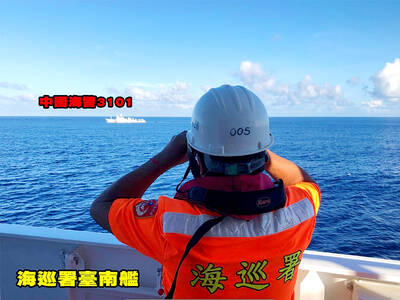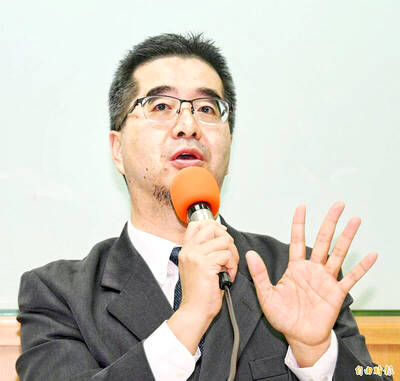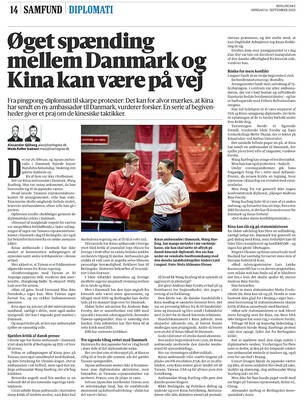Taiwan last week recorded 245 medical visits for scarlet fever, the highest figure for the period in the past five years, the Centers for Disease Control (CDC) said yesterday.
"We observed that scarlet fever-related visits in Taiwan began to gradually increase around late November last year, reaching a relatively high point around mid-May this year," CDC Epidemic Intelligence Center Director Guo Hung-wei (郭宏偉) told a regular news briefing in Taipei.
Since mid-May, the outbreak has plateaued, with most cases involving children aged three to 12, he added.

Photo: Chiu Chih-jou, Taipei Times
The 245 medical visits for scarlet fever was the highest weekly figure this year and the highest for the period in the past five years, CDC spokesperson Lo Yi-chun (羅一鈞) said.
"Scarlet fever is typically more prevalent in late spring and early summer, so the elevated case numbers during this period are not particularly surprising," he said.
There were also 239 cases in early May, suggesting that Group A Streptococcus — the bacteria responsible for the disease — has continued to spread across Taiwan since then, Lo said.
Weekly visits were often limited to just double digits between 2020 and last year, likely due to COVID-19 prevention measures, Lo said.
Although pediatricians across the country have recently also reported a noticeable increase in scarlet fever cases, patients have generally responded well to antibiotics, "with no signs of the disease becoming particularly severe," he said.
Doctors in Taiwan are well trained in treating scarlet fever with antibiotics, but patients must follow medical instructions closely, as incomplete treatment could lead to antibiotic resistance, Lo said.
Scarlet fever can be difficult to distinguish from enterovirus infections, as they share symptoms such as a fever, sore throat and a widespread rash, he said.
While it is enterovirus season, doctors and the public should exercise extra caution and consider whether symptoms might be related to a Group A Streptococcus infection, he said.
Those infected with scarlet fever should not visit public areas until they have been fever-free for more than 24 hours, the CDC said.

The Coast Guard Administration (CGA) yesterday said it had deployed patrol vessels to expel a China Coast Guard ship and a Chinese fishing boat near Pratas Island (Dongsha Island, 東沙群島) in the South China Sea. The China Coast Guard vessel was 28 nautical miles (52km) northeast of Pratas at 6:15am on Thursday, approaching the island’s restricted waters, which extend 24 nautical miles from its shoreline, the CGA’s Dongsha-Nansha Branch said in a statement. The Tainan, a 2,000-tonne cutter, was deployed by the CGA to shadow the Chinese ship, which left the area at 2:39pm on Friday, the statement said. At 6:31pm on Friday,

The Chinese People’s Liberation Army Navy’s (PLAN) third aircraft carrier, the Fujian, would pose a steep challenge to Taiwan’s ability to defend itself against a full-scale invasion, a defense expert said yesterday. Institute of National Defense and Security Research analyst Chieh Chung (揭仲) made the comment hours after the PLAN confirmed the carrier recently passed through the Taiwan Strait to conduct “scientific research tests and training missions” in the South China Sea. China has two carriers in operation — the Liaoning and the Shandong — with the Fujian undergoing sea trials. Although the PLAN needs time to train the Fujian’s air wing and

The American Institute in Taiwan (AIT) put Taiwan in danger, Ma Ying-jeou Foundation director Hsiao Hsu-tsen (蕭旭岑) said yesterday, hours after the de facto US embassy said that Beijing had misinterpreted World War II-era documents to isolate Taiwan. The AIT’s comments harmed the Republic of China’s (ROC) national interests and contradicted a part of the “six assurances” stipulating that the US would not change its official position on Taiwan’s sovereignty, Hsiao said. The “six assurances,” which were given by then-US president Ronald Reagan to Taiwan in 1982, say that Washington would not set a date for ending arm sales to Taiwan, consult

A Taiwanese academic yesterday said that Chinese Ambassador to Denmark Wang Xuefeng (王雪峰) disrespected Denmark and Japan when he earlier this year allegedly asked Japan’s embassy to make Taiwan’s representatives leave an event in Copenhagen. The Danish-language Berlingske on Sunday reported the incident in an article with the headline “The emperor’s birthday ended in drama in Copenhagen: More conflict may be on the way between Denmark and China.” It said that on Feb. 26, the Japanese embassy in Denmark held an event for Japanese Emperor Naruhito’s birthday, with about 200 guests in attendance, including representatives from Taiwan. After addressing the Japanese hosts, Wang